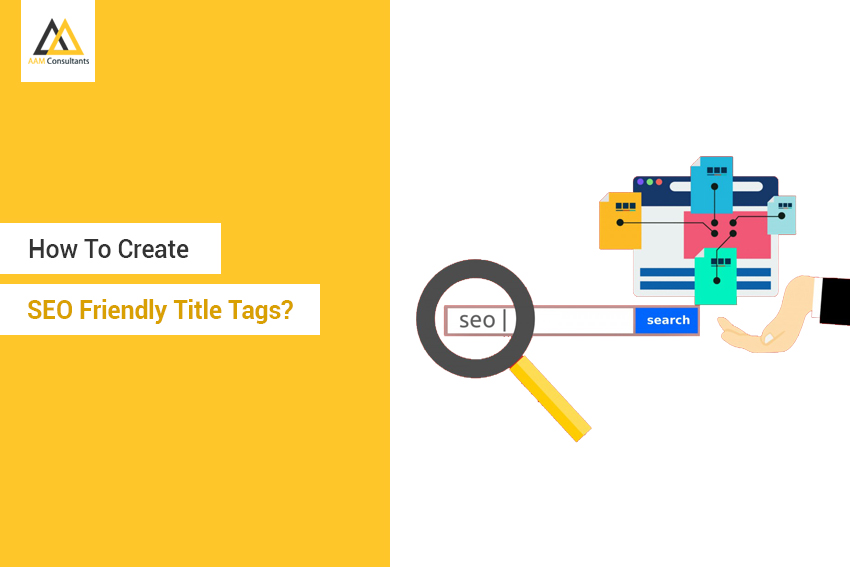Title tags are one of the most important items in the SEO toolbox as it forms the link between the content on the page and the results from user searches. Although the search engine algorithms and practices are always changing, the title tag is almost certainly still relevant and should be optimized correctly. Read on to find out how to craft the perfect SEO title tag.
What are Page Title Tags?
On the face of it, you might think a title tag simply refers to the title of an article or blog post that you write at the top. It is this, but it’s also a piece of html code that is recognised by search engines and has a bearing on how visible your page is on the Internet.
A title tag is writing as <title> </title> in html code. The title of the document appears between the two words in angle brackets. The title tag for this page, for instance, would read <title>How To Create SEO Friendly Title Tags</title>. The title tag is a relevant SEO factor for several reasons, but mainly because it is the main headline that is searched for and shared.
What are the Benefits of a Good SEO Title?
The title tag of your website is very important, not only for users but also for search engines. The search engine crawlers will rank your title tag keywords in the index according to relevance and quality; in other words, how relevant your title keywords are to the on-page content. This will determine how responsive your Web page is to user searches.
You can influence the effectiveness of your Internet visibility by creating content that is relevant to your title tag. You can further enhance this performance by choosing keywords for your title that users are likely to search for; this is also known as search engine optimization. By crafting title tags that are relevant to your content and to user searches, you improve your chances of being found.
How do you use a Keyword in a Title?
How you use keywords in title tags is highly relevant to the success of your SEO strategy. When chosen correctly, the right keyword can make you stand out in the search results, but be warned, if you overdo keywords, the search engines will notice and rank you lower for ‘stuffing.’ The key is to strike a balance.
Long-tail keywords refer to keywords that stand out due to extra information. For instance, ‘wedding photographer,’ a keyword, becomes ‘wedding photographer New Delhi,’ a long tail keyword. The added information means your keyword is competing in a less saturated market. Using keywords from your content and long-tail keywords for total tags improves your SEO performance.
How Many Keywords Should be Used in a Title Tag?
Some people say that inserting keywords into meta tags is a waste of time. They propose that search engines no longer rank content according to these criteria; however, it’s not possible to know this for sure. Furthermore, the rules of SEO are constantly changing, and the meta tag presents another opportunity to get noticed. But how many keywords should you use?
During your keyword research, you should come up with a list of very similar keywords, both short and long. Use the primary keyword in your title tag; the rest can be broken up for meta titles and description tags. Your title tag should be a short six to ten-word sentence that contains your primary keyword phrase.
How do you Separate Keywords in a Title Tag?
The general consensus these days is that only your primary keyword should be used in the title tag. The search engine crawlers look for relevance and discourage stuffing more than one keyword in the title is therefore discouraged. There are, however, instances when more than one keyword is used in a title, or more commonly, in a meta title or description.
In the case of selling multiple items, for instance, you may require a list of items you are selling. The best way to separate keywords in a title is to use commas and spaces. If you were selling books online and you wanted to target the keywords ‘buy books online’ and ‘online books sale,’ you can separate them with comma and space.
How do you Write a Relevant SEO Title Tag?
Your effective SEO title tag starts with keyword research. You can search for related terms on search engines or use keyword research tools like Google Keyword Planner or Moz. If you want your content to gain traction faster, identify long-tail keywords with less competition.
Your title tag should be inserted in the title section of the website you are optimising. Some people wonder if they should craft a title before or after the article is written. Writing it first will guide the article and create relevance but should not be fixed. The title should be adapted as you progress.
What are Some SEO Title Tag Best Practices?
Titles are read and ranked by search engine crawlers, so you might think it’s a good idea to craft titles that are suitable to search engines, but this is bad practice. Although the search engine ranks your title, it will only gain traction if it’s interesting to humans. The search engine will notice when titles are clicked by humans and when they’re not, so it’s always best to write for humans.
When writing your SEO titles, it might be tempting to make them longer; after all, a longer title means you can include more long-tail keywords. Google, however, will automatically shorten the title in a process called ‘truncation.’ While this may not automatically affect your search engine ranking in the short term, it can impact your CTR. Keep titles short and straightforward.
There is a debate over whether a keyword should be closer to the beginning or the end of a title. It’s not known if the search engines use this as a ranking factor, but in terms of your human audience, a keyword closer to the beginning of a title is more relevant and accessible.



